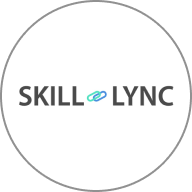Courses by Software
Courses by Semester
Courses by Domain
Tool-focused Courses
Machine learning
POPULAR COURSES
Success Stories
Share
Modified on
06 Nov 2024 06:13 pm
How to Ace Your CFD Engineer Interview? | Engineer’s Interview Blueprint

Skill-Lync
Candidates are expected not only to answer theoretical questions but also to present real-world knowledge about simulations, project work, and problem-solving.
It's a role that combines analytical thinking with technical expertise, requiring you to explain complex ideas in a clear, concise way.
This blog compiles some of the most frequently asked questions in CFD interviews, providing you with the refined answers that will help you excel.
If you're aiming to land a job in computational fluid dynamics, these questions will be invaluable in preparing to showcase your skills, knowledge, and readiness for the role.
Interview Questions and Answers
1. What is the unit of density?
Density is measured in kilograms per cubic meter (kg/m³), which represents the mass per unit volume of a substance.
2. Explain the Y+ concept.
Y+ is a dimensionless value in CFD that describes the distance from a wall to the first cell center in a mesh. It’s essential for turbulence modeling, particularly in capturing boundary layer effects accurately.
3.What is kinematic viscosity?
Kinematic viscosity measures a fluid’s resistance to flow under gravity and is calculated as the dynamic viscosity divided by the fluid’s density. Its units are m²/s.
4. Explain Bernoulli’s Principle.
Bernoulli’s Principle states that in a steady, incompressible flow, the sum of pressure, kinetic, and potential energy per unit volume remains constant along a streamline. This principle explains the interaction between velocity and pressure in fluid flows.
5. Describe a project you completed in ANSYS.
Provide details about a specific project, such as simulating airflow or studying heat transfer. Mention the boundary conditions, mesh type, solver used, and the main challenges or insights from your results.
6. What is vortex shedding?
Vortex shedding occurs when alternating vortices detach from the sides of a bluff body in a fluid flow, causing oscillations. Understanding this phenomenon helps engineers predict flow-induced vibrations.
7. If asked to mesh a geometry using ICEM CFD, which type of mesh would you choose: tetra or hexa?
Hexahedral (hexa) meshes are usually preferred for their alignment with flow patterns, improving accuracy and efficiency. Tetrahedral (tetra) meshes, however, are easier to generate and suitable for more complex geometries.
8. What is Reynolds number, and how is it calculated?
Reynolds number predicts the flow regime (laminar or turbulent) and is calculated as:
Re=ρvDμ\text{Re} = \frac{\rho v D}{\mu}Re=μρvD
where ρ\rhoρ is density, vvv is velocity, DDD is characteristic length, and μ\muμ is dynamic viscosity.
9. What are K and h?
K: Thermal conductivity, measuring a material’s ability to conduct heat.
h: Convective heat transfer coefficient, representing heat transfer between a solid surface and fluid in motion.
Conclusion
Preparing for a CFD Engineer interview is about mastering the details and applying your knowledge practically.
Approach each question with clarity and professionalism, and you’ll be well-positioned to secure that coveted CFD role.
Whether you’re breaking into the field or aiming for career growth, a thorough understanding of these topics can make all the difference.
Best of luck on your journey to becoming a successful CFD Engineer!
With Skill-Lync's Post Graduate Programs, you'll build a rock-solid foundation in all these critical concepts, making you interview-ready in no time. Plus, our Career Experts offer hands-on support through mock interviews, resume workshops, LinkedIn profile optimization, and much more!
Sign up for a FREE course demo today, and let’s start your journey toward landing that dream job!
Author
Uma Maheswari K
Author

Skill-Lync
Subscribe to Our Free Newsletter

Continue Reading
Related Blogs
Technical knowledge and practical experience alone cannot help you to land your dream job. You must possess the confidence and skill to present yourself in an interview.
24 Nov 2022
On engineering drawings, GD&T is a global language. Geometric dimensioning and tolerancing decrease controversies, guessing, and assumptions across the manufacturing and inspection processes by ensuring uniformity in drawing specifications and interpretation.
23 Nov 2022
BMS engineers are sought-after professionals in top OEMs, including Mercedes Benz, Tata Elxsi, Tata Technologies and many other key players.
03 Nov 2022
Cognizant is a worldwide technology corporation focusing on outsourcing, information technology, and business consulting. Their headquarters is located in Teaneck, New Jersey.
29 Oct 2022
Accenture is one of India's leading IT companies and is the top provider of management consulting and technology services
28 Oct 2022
Author

Skill-Lync
Subscribe to Our Free Newsletter

Continue Reading
Related Blogs
Technical knowledge and practical experience alone cannot help you to land your dream job. You must possess the confidence and skill to present yourself in an interview.
24 Nov 2022
On engineering drawings, GD&T is a global language. Geometric dimensioning and tolerancing decrease controversies, guessing, and assumptions across the manufacturing and inspection processes by ensuring uniformity in drawing specifications and interpretation.
23 Nov 2022
BMS engineers are sought-after professionals in top OEMs, including Mercedes Benz, Tata Elxsi, Tata Technologies and many other key players.
03 Nov 2022
Cognizant is a worldwide technology corporation focusing on outsourcing, information technology, and business consulting. Their headquarters is located in Teaneck, New Jersey.
29 Oct 2022
Accenture is one of India's leading IT companies and is the top provider of management consulting and technology services
28 Oct 2022
Related Courses

Skill-Lync offers industry relevant advanced engineering courses for engineering students by partnering with industry experts.
Our Company
4th Floor, BLOCK-B, Velachery - Tambaram Main Rd, Ram Nagar South, Madipakkam, Chennai, Tamil Nadu 600042.
Top Individual Courses
Top PG Programs
Skill-Lync Plus
Trending Blogs
© 2025 Skill-Lync Inc. All Rights Reserved.







